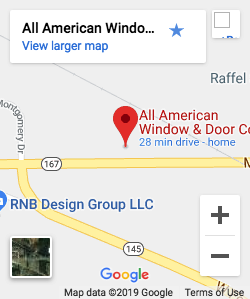Blog
Navigating Global Trade Certifications for the Best Windows and Siding Solutions
As the global demand for energy-efficient building materials continues to surge, navigating the complexities of trade certifications for windows and siding has become increasingly crucial for industry professionals. According to a report by the U.S. Department of Energy, buildings account for approximately 40% of the total energy consumption in the United States, highlighting the importance of high-performance windows and siding solutions that meet stringent energy-efficiency standards. Furthermore, the global market for windows and siding is expected to reach $270 billion by 2025, underscoring the need for manufacturers to comply with various international certifications to remain competitive. Understanding the certification landscape not only ensures compliance but also enhances consumer trust and marketability of windows and siding products. In this blog, we will explore the common problems associated with these trade certifications and provide insights on how to effectively navigate this intricate landscape for optimal product solutions.

Understanding Global Trade Certifications in Windows and Siding Industry
In today's competitive market, understanding global trade certifications is crucial for making informed decisions in the windows and siding industry. These certifications not only ensure quality and compliance with international standards but also provide a level of assurance to consumers. For manufacturers and installers, being aware of these certifications can significantly impact marketability and trustworthiness. Familiar certifications like ENERGY STAR, NFRC, and AAMA play a pivotal role in outlining performance metrics, energy efficiency, and durability, helping businesses align their products with consumer expectations.

Moreover, different regions have varying certification requirements that can influence trade dynamics. Staying abreast of these regulations is essential for companies engaging in cross-border transactions. With the rise of e-commerce in the construction sector, possessing universally recognized certifications can broaden market reach and enhance competitiveness. Therefore, understanding and navigating these global trade certifications is not only beneficial for compliance but also vital for positioning your business favorably in a rapidly evolving market landscape.
Essential Certifications to Look for When Choosing Windows and Siding
When selecting windows and siding for your home, understanding the essential certifications can significantly influence the quality and performance of your investment. Certifications such as the Energy Star label are crucial indicators of energy efficiency, indicating that the product meets the stringent guidelines set by the U.S. Environmental Protection Agency (EPA). According to the EPA, homes that use energy-efficient windows can save homeowners between $126 to $465 annually on energy costs, depending on the climate zone.
Another key certification to consider is the American Architectural Manufacturers Association (AAMA) certification, which ensures that windows and doors meet specific performance standards for safety, durability, and weather tightness. The AAMA's Quality Assurance program, for instance, guarantees that the products undergo rigorous testing, making them more comfortable and reliable in harsh weather conditions. In fact, products with AAMA certification show 30% better resistance to moisture than non-certified alternatives, thereby increasing the longevity of your home’s exterior.
Lastly, look for products certified by the National Fenestration Rating Council (NFRC). The NFRC label provides essential information about a window's energy performance, including U-factor and Solar Heat Gain Coefficient (SHGC). A 2022 report by the NFRC highlighted that properly rated windows could reduce heating and cooling costs by up to 15%, making them a smart choice for both economic and environmental considerations. As a homeowner, prioritizing these certifications ensures that you are making informed decisions that enhance both the efficiency and durability of your home's exterior.
How to Verify Certification Authenticity for Your Home Improvements
When investing in home improvements, particularly in windows and siding, it’s essential to ensure that the products come with legitimate certifications. To verify the authenticity of these certifications, homeowners should begin by examining certification labels and documents carefully. Genuine certifications typically include a recognizable logo, a unique identification number, and detailed information about the testing standards and organization involved. It's advisable to look for verification tools or online databases provided by certifying organizations to cross-check the legitimacy of the certification.
In the context of maintaining security in digital communications, recent developments such as the introduction of mutual TLS (Transport Layer Security) can also serve as an analogy for verifying certifications in physical products. Just as organizations implement robust verification methods for digital certificates to safeguard data, homeowners should adopt a thorough verification process for any certifications related to their renovations. This proactive approach not only helps in making informed choices but also ensures that the products installed in their homes meet safety and quality standards.
Navigating Global Trade Certifications for the Best Windows and Siding Solutions
| Certification Type | Issuing Organization | Scope | Validity Period | Verification Method |
|---|---|---|---|---|
| Energy Star | U.S. Environmental Protection Agency | Energy efficiency for windows and siding | 3 years | Online database lookup |
| NFRC Certified | National Fenestration Rating Council | Performance ratings for windows | 3 years | Product labels and online verification |
| AAMA Certification | American Architectural Manufacturers Association | Quality assurance standards for windows and doors | 1 year | Third-party inspection and online resources |
| ISO 9001 | International Organization for Standardization | Quality management systems | 3 years | Certification body verification |
| LEED Certification | U.S. Green Building Council | Sustainable building practices | Varies by project | Online project database |
The Benefits of Certified Windows and Siding Products for Energy Efficiency
When considering home improvements like windows and siding, the push for energy efficiency has made certified products increasingly important. According to the U.S. Department of Energy, energy-efficient windows can reduce energy bills by up to 15% annually. This highlights the value of investing in certified solutions, which often meet stringent performance standards set by organizations such as the National Fenestration Rating Council (NFRC). Certified products not only provide better insulation but also help reduce reliance on heating and cooling systems, translating to significant savings over time.
Moreover, opting for certified siding products can further enhance a home's energy efficiency. The Vinyl Siding Institute reported that homes with insulated vinyl siding can achieve up to 20% lower energy consumption compared to traditional siding. This is primarily due to the enhanced thermal resistance that these products offer. By choosing windows and siding that carry reputable certifications, homeowners not only invest in the durability and aesthetic appeal of their properties but also contribute to environmental sustainability through decreased energy use and emissions.

Top Tips for Navigating the Certification Process in Global Trade
Navigating the certification process in global trade can be a daunting task, especially when it comes to finding the best windows and siding solutions. First and foremost, understanding the specific certifications required in your target markets is crucial. Different countries have various standards and regulations, ranging from energy efficiency to environmental impact. Researching these requirements can save you time and ensure compliance, helping you avoid costly delays in getting your product to market.
Additionally, establishing strong relationships with certification bodies can streamline your certification journey. Engaging with professionals in the industry who have successfully navigated similar processes can provide valuable insights. Consider attending trade shows and workshops, where you can learn directly from experts and network with certification officials. Lastly, keep documentation organized and readily accessible; a well-prepared application can expedite the certification timeline, allowing for a smoother transition from concept to sales. By following these tips, businesses can better position themselves for success in the competitive landscape of global trade.
Navigating Global Trade Certifications for Windows and Siding Solutions
This chart illustrates the number of global trade certifications required for various types of windows and siding solutions. Understanding these requirements is key to ensuring compliance and accessing new markets.
About Us
We serve the Greater Milwaukee area: Waukesha, Milwaukee, Washington, Ozaukee Counties and nearby areas, including Germantown, Menomonee Falls, Mequon, Cedarburg, Thiensville, Grafton, Jackson, West Bend, Hartland, Waukesha, Brookfield, West Allis, Franklin, Greenfield and more. We are Wisconsin’s Best Contractor for Replacement Windows, Doors, Siding & Roofing!
Contact Details
Address:
N112 W14880 Mequon Road
Germantown, Wisconsin 53022
Phone:
Email:
Showroom Hours
Monday: 9am – 5pm
Tuesday: 9am – 5pm
Wednesday: 9am – 5pm
Thursday: 9am – 5pm
Friday: 9am – 4:30 pm
Saturday by Appointment
Evenings by Appointment



